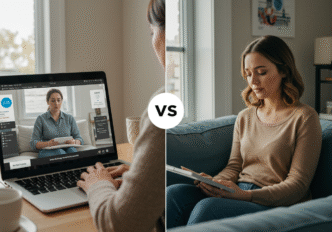

I’ve always been intrigued by wellness trends that promise quick fixes. You know the ones—they pop up on Instagram, endorsed by celebrities with perfect skin claiming they’ve found the secret to eternal youth and energy. IV therapy is definitely one of those trends that’s caught my attention lately. From hangover cures to immunity boosters, these vitamin-packed drips seem to be everywhere. But is there actually something to this, or is it just another expensive wellness fad?
So I decided to dig into what IV therapy really is, whether it works, and if it’s worth your hard-earned cash. Because let’s face it—before sticking a needle in your arm, you probably want to know what you’re getting into.
What Is IV Vitamin Therapy, Really?
IV vitamin therapy isn’t actually new. Believe it or not, it dates back to the 1970s when Dr. John Myers developed the first “cocktail” of vitamins and minerals administered intravenously . What is new is how it’s been transformed from a medical treatment into a wellness experience.
At its core, IV therapy delivers nutrients directly into your bloodstream through a needle inserted into a vein. The big selling point? These nutrients bypass your digestive system entirely, allowing for much higher absorption rates—about 90% compared to the measly 50% you might get from oral supplements .
A typical session involves sitting comfortably (usually in a recliner) while a trained professional inserts an IV line. The infusion itself takes anywhere from 30 minutes to an hour, depending on what’s in the bag and the size of your veins. During this time, you’re basically hanging out—reading, scrolling through your phone, or chatting with the person next to you who’s also paying good money for a bag of vitamins.
But wait, isn’t this something hospitals do? Yes—but with a crucial difference. Medical IV therapy treats specific deficiencies or conditions. The wellness version? That’s where things get murkier.
The Menu: Common Types of IV Drips and Their Supposed Benefits
Walk into any IV drip bar and you’ll find a menu that rivals your local coffee shop in variety. Here are some of the most popular options you’ll encounter:
The Myers’ Cocktail: The Classic Formula
This is the OG of IV treatments—a blend of B vitamins, vitamin C, calcium, and magnesium . It’s marketed as a general wellness booster that can help with everything from fatigue to fibromyalgia. Think of it as the “house blend” of the IV therapy world.
Immunity Boost Drip: The Cold-Fighter
Packed with high doses of vitamin C and zinc, this one’s especially popular during cold and flu season. Providers claim it can strengthen your immune system and help ward off illness—a particularly appealing promise since the COVID-19 pandemic .
Hangover Drip: The Weekend Savior
After a night of too many margaritas? This combination of hydration fluids, anti-nausea medication, and vitamins claims to get you back on your feet faster than you can say “I’ll never drink again.” It’s basically tailored to rehydrate you quickly and ease those morning-after symptoms.
Beauty “Glow” Drip: The Skin Enhancer
With ingredients like glutathione and biotin, these formulations promise to give you radiant skin, stronger nails, and shinier hair. It’s basically an expensive way to try to drink (or rather, drip) your way to beauty.
But here’s where I have to pump the brakes a bit. Despite all these enticing promises, scientific evidence supporting these benefits in healthy people is… well, pretty thin . Most studies are small, lack proper controls, or show results that aren’t significantly better than placebo.
What Actually Happens During an IV Therapy Session?
I think it helps to know what you’re getting into, so here’s the play-by-play of a typical IV therapy session:
First, you’ll usually have a brief consultation where you discuss your health history and goals. This is crucial—any reputable provider should be asking about existing conditions, medications, and allergies.
Then, a healthcare professional (ideally a nurse or someone with proper medical training) will find a suitable vein, clean the area, and insert the needle. Once the IV is secure, you’ll recline and relax while the drip does its thing. Some people report feeling an immediate sense of refreshment or energy, though this could partly be placebo effect.
Most sessions wrap up within an hour, after which you’re free to go about your day with no downtime required.
The Cost: Is It Worth Your Money?
Let’s talk about what might be the most sobering aspect of IV therapy: the price tag.
A single session typically runs between $150-$400 , depending on the location and what’s in your drip. Insurance generally doesn’t cover these treatments since they’re considered elective.
For perspective, that’s roughly the cost of a month’s worth of high-quality oral supplements, a couple of massages, or quite a few really good salads loaded with natural vitamins and minerals.
And here’s where I’ve gotta be honest—for most healthy people, the benefits may not justify the cost. If you’re not suffering from a diagnosed deficiency or a medical condition that affects nutrient absorption, your body is probably getting what it needs from food and maybe oral supplements.
The Real Deal: Risks and Considerations
Despite the glossy marketing, IV therapy isn’t without risks. Any time you insert something into a vein, complications can occur:
- Infection at the injection site
- Blood clots
- Air embolism (when air enters the vein)
- Potential vein damage with repeated use
- Risk of fluid overload, which can be dangerous for people with heart or kidney conditions
There’s also the risk of getting too much of certain vitamins, which can actually be harmful. Your body has natural systems to regulate vitamin levels, and bypassing these safeguards through direct IV administration could potentially lead to vitamin toxicity .
This is why it’s absolutely crucial to receive IV therapy from qualified medical professionals in a clean environment with proper protocols. Just because it’s trending doesn’t mean it should be taken lightly.
So… Is IV Therapy Worth It?
After diving into the research, I’ve come to a nuanced conclusion about IV therapy. It’s not black and white.
For people with genuine absorption issues, certain medical conditions, or diagnosed vitamin deficiencies, medically-supervised IV therapy can be beneficial . If you’re severely dehydrated after an intense sporting event or genuinely struggling with nutrient absorption, there might be a case for it.
But for the average healthy person looking for a wellness boost? The evidence suggests your money might be better spent elsewhere. A balanced diet, quality oral supplements when needed, adequate hydration, and regular exercise will likely do more for your overall wellness than occasional IV infusions.
That said, I understand the appeal. There’s something seductive about the quick-fix promise of IV therapy. And some people genuinely report feeling better afterward—whether that’s from the actual vitamins or the placebo effect of doing something proactive for your health (plus an hour of enforced relaxation) is hard to say.
FAQ: What You Really Want to Know About IV Therapy
Will IV therapy cure my hangover?
While the hydration component might help with dehydration symptoms, there’s limited scientific evidence that it works better than drinking fluids and taking over-the-counter pain relievers. Plus, at $150+ per session, that’s an expensive way to recover from a night out!
How often should I get IV therapy?
This depends entirely on your individual health needs. Most IV therapy providers suggest monthly treatments for “maintenance,” but there’s little scientific evidence to support this frequency for healthy individuals. If you have a medical condition that might benefit from IV therapy, this should be determined by your healthcare provider, not a drip bar’s marketing material.
Can’t I just take oral supplements instead?
For most people, yes! High-quality oral supplements, taken properly with food when recommended, can address most nutritional needs. While they don’t provide the 90% absorption rate of IV therapy, they’re significantly more affordable and convenient .
Is IV therapy safe during pregnancy?
There’s a concerning lack of research on IV vitamin therapy during pregnancy . Given the potential risks and unknown effects, pregnant women should avoid elective IV treatments unless specifically prescribed by their obstetrician.
How do I know if a provider is legit?
Look for facilities staffed by licensed medical professionals (nurses, physician assistants, doctors). The provider should take a detailed medical history, discuss potential risks, and create a customized plan rather than just offering a standard menu. Also, the facility should be clean, with proper protocols for needle disposal and infection control.
In the end, IV therapy isn’t magic—it’s just one potential tool in a wellness toolkit. Like any trend, it’s worth approaching with healthy skepticism and an understanding of what it can and can’t do. For most of us, good old-fashioned healthy eating and regular exercise might be less glamorous than sitting with a drip in our arm, but they’re proven ways to maintain wellness that don’t require needles or emptying your wallet.
And honestly? Sometimes the best wellness treatment is simply taking a nap, drinking a glass of water, and getting outside for some fresh air. No appointment necessary.












